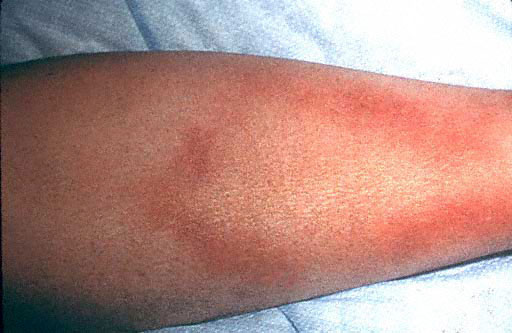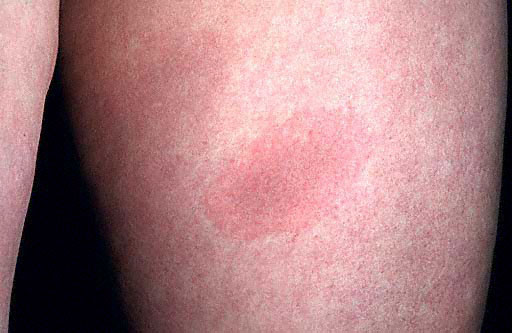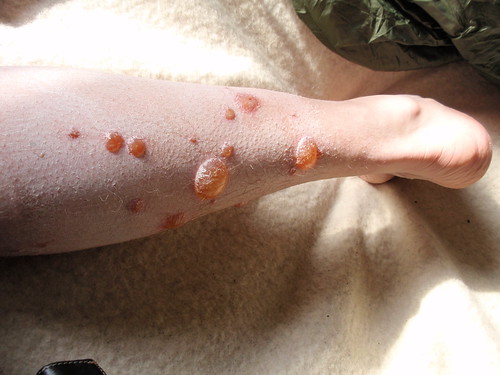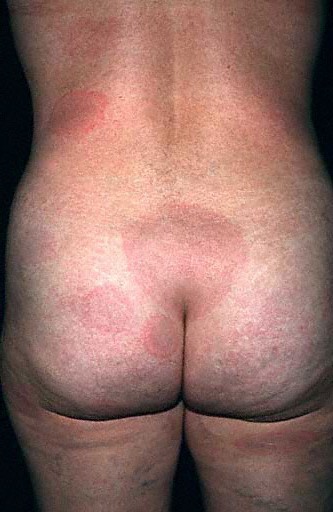BULLS-EYE
Here are your "typical/classic" or should I say "actually known about or associated" rashes. As you can see they are clearly identifiable by the red outer ring, followed by a more natural colored skin and then the red center. PLEASE NOTE LESS THEN 20% OF LYME PATIENTS REPORT HAVING THIS RASH! Typically, doctors can identify this rash as a "Bulls-eye" and hopefully would immediately start their patient on a 3 months course of antibiotics (as this is early stage Lyme).
Unfortunately, even with this textbook rash, many doctors are recommending no treatment until a positive lyme titer is received, which could take months or never happen due to the tests being so unreliable.
UNIFORMLY RED RASH
Next you have the unifromly red rash which lacks the ring or target appearance. These rashes tend to be oval or round in shape and have demarcated boarders.


Reddish Blue Rash
Some Lyme Disease Rashes can have a blue / purple appearance and at times are mistaken for a bruise.
Blistering Rash
Yet another form of a Lyme rash includes varying degrees of blisters and are frequently misdiagnosed as a spider bite. Many people believe that some people are more sensitive to lyme borrealis and therefore they have a more extreme reaction to the spirochetes.

Dissemintated Rash
This can be caused by multiple tick bites but is more likely to show that Lyme (spirochetes) have already starting traveling to the blood stream to other areas of the body such as the joints, nervous system and other areas of the skin.

www.medicinenet.com
www.webmd.com
www.lymemd.org
http://hardinmd.lib.uiowa.edu/dermnet/lymedisease2.html